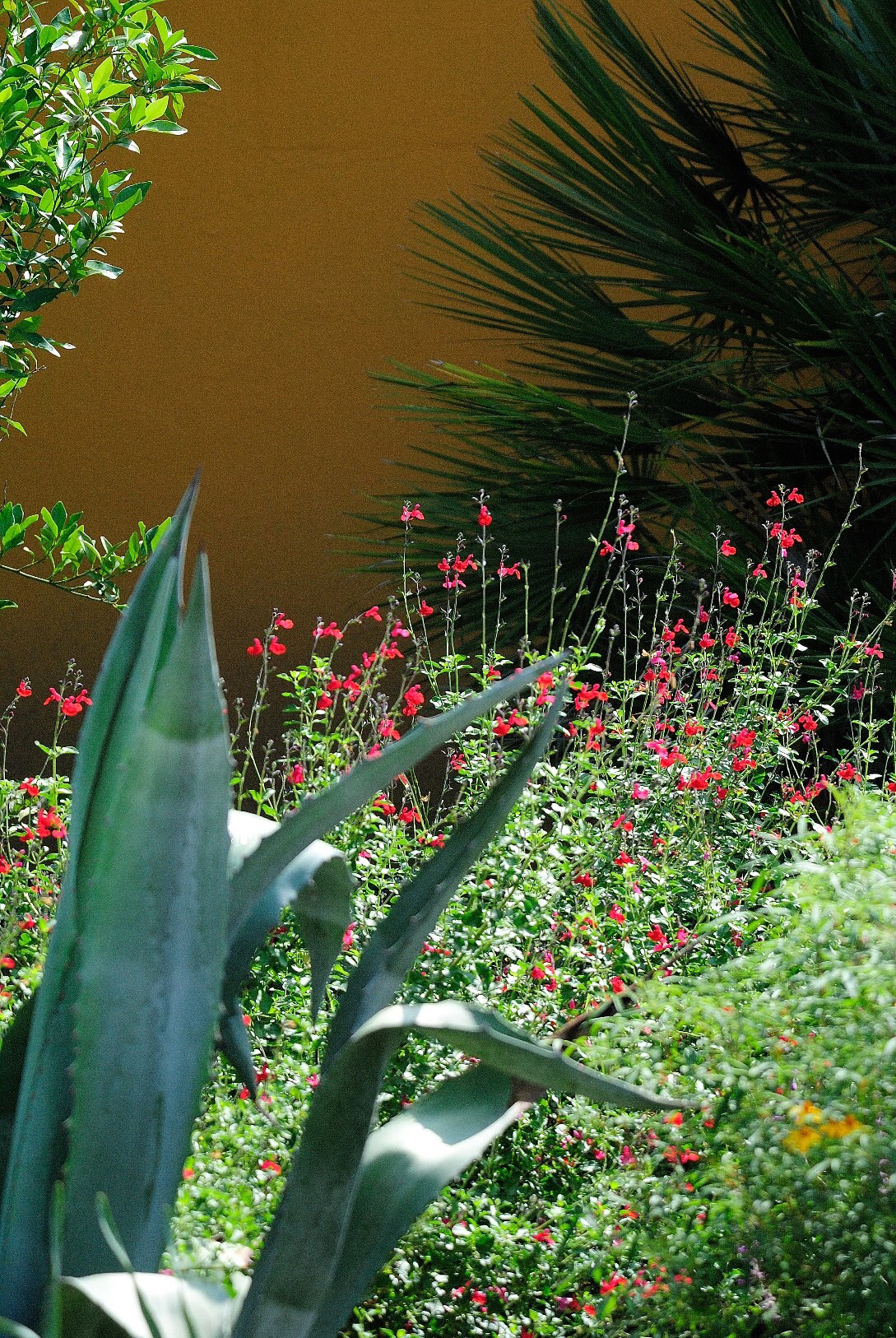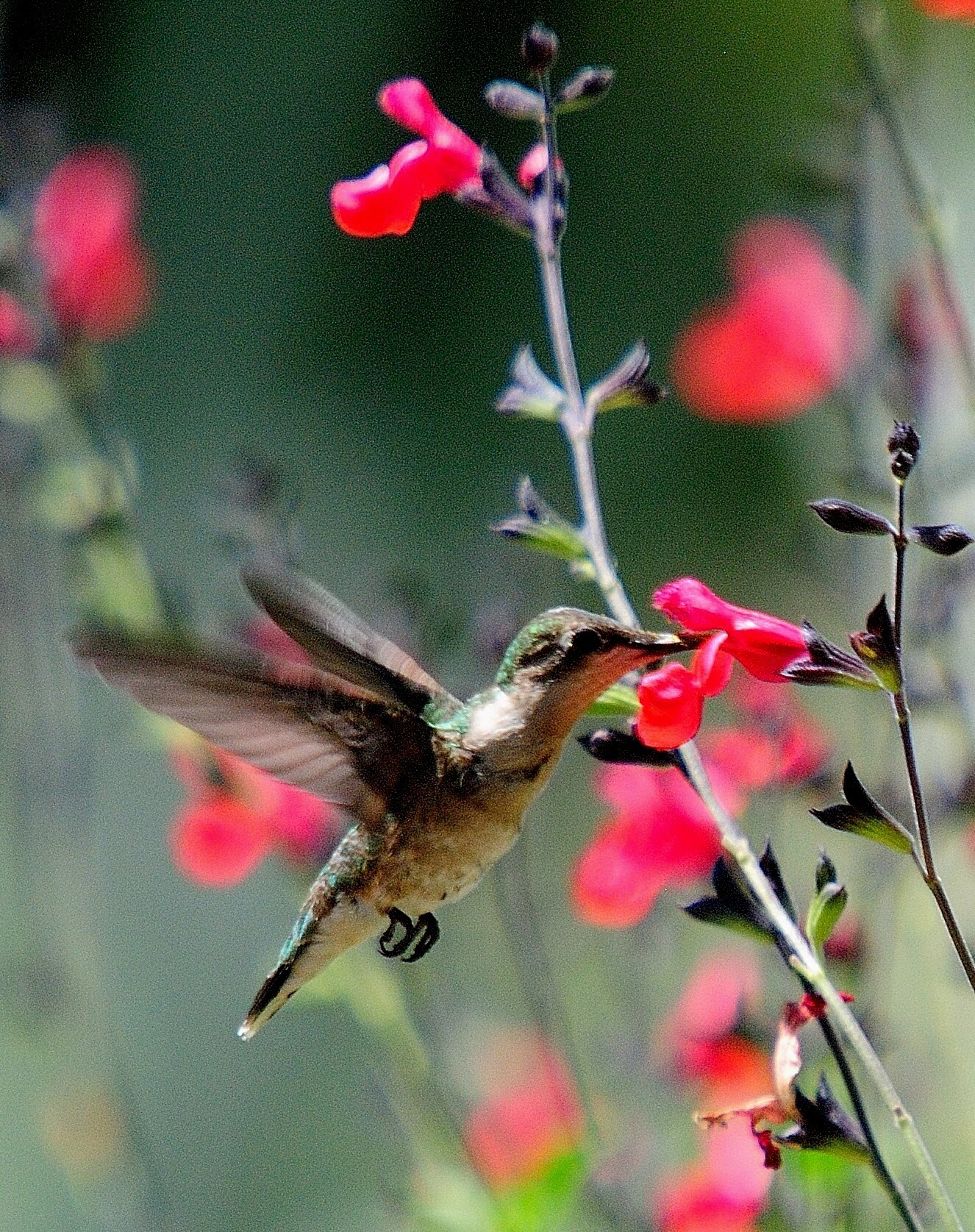Farm & Ranch
The Garden Guy — Cherry Sage Sizzles With Color

By Norman Winter
If you think the color red evokes passion and excitement in your children, you haven’t seen anything until you watch hungry hummingbirds visiting a sweep or drift of cherry sage. The cherry sage, also called autumn sage, is known botanically as Salvia greggii, and they have the ability to turn on the welcome sign to all those feasting, darting acrobats we adore.
The cherry sage is native to Texas and is cold hardy from zones six to nine. So here in North Texas it should have no problem being a faithful perennial provided you give it good drainage. By all means, don’t let the other common name of autumn sage throw you as it blooms from late spring until frost.
There are several named varieties in the market place like Furman’s Red, Wild Thing, Lipstick, Flame and the fairly new Mesa series that comes in scarlet, purple and rose. You can’t go wrong with your selection. They thrive in full sun, but I love its appearance in morning sun and afternoon sage (or shade) as well.
As I mentioned above, the one prerequisite for success is good soil drainage. In fact, well-drained soil just may encourage a spring return further north than expected. Salvia greggii may also offer you a perennial-like performance by reseeding.
When you get yours, plant on raised beds in fertile soil, and you’ll be thrilled with the gardening talent you have discovered. I have grown them in miserable conditions in South Texas and in a drought tolerant Mediterranean Garden in Savannah, and in both instances they are truly champions.
To read more pick up a copy of the July 2018 NTFR issue. To subscribe call 940-872-5922.
Farm & Ranch
Hazards of Backyard Poultry

By Barry Whitworth, DVM
Having backyard poultry is a popular agriculture enterprise. According to the United States Department of Agriculture, 0.8 percent of all households in the United States have chickens. People keep chickens for a variety of reasons with table eggs being one of the more common reasons.
Unfortunately, some of these poultry producers are not aware of the hazards that come with keeping poultry because many times they carry pathogens but appear healthy.
Chickens are carriers of several zoonotic diseases. These are diseases that can be passed from animals to humans. According to a recent survey in Pennsylvania, a majority of backyard poultry producers were aware of the dangers of avian influenza. However, this study also revealed that far fewer producers were aware of the risk of possible exposure to Salmonella and Campylobacter.
The lack of knowledge about the hazards of raising poultry likely contributes to the continued issues of Salmonella outbreaks associated with backyard poultry. In 2023, the Centers for Disease Control and Prevention reported 1,072 illnesses of Salmonella linked to backyard poultry, and 272 of those patients required hospitalization. Oklahoma reported 43 individuals with the disease.
To read more, pick up a copy of the April issue of NTFR magazine. To subscribe by mail, call 940-872-5922.
Farm & Ranch
Ag Elsewhere: Wyoming

By Tressa Lawrence
Babies are tucked away in every nook and cranny. Many ranchers across Wyoming have baby animals popping up all over this time of year.
Farm & Ranch
Ag Elsewhere: Montana

By Lindsey Monk
Another load of grain in to keep feeding the calves until the green grass can really start popping.
-

 Country Lifestyles1 year ago
Country Lifestyles1 year agoScott & Stacey Schumacher: A Growth Mindset
-

 Equine7 months ago
Equine7 months agoThe Will to Win
-

 Country Lifestyles7 years ago
Country Lifestyles7 years agoStyle Your Profile – What your style cowboy hat says about you and new trends in 2017
-

 Country Lifestyles4 years ago
Country Lifestyles4 years agoAmber Crawford, Breakaway Roper
-

 HOME7 years ago
HOME7 years agoGrazing North Texas – Wilman Lovegrass
-

 Country Lifestyles7 years ago
Country Lifestyles7 years agoDecember 2016 Profile, Rusty Riddle – The Riddle Way
-

 Country Lifestyles8 years ago
Country Lifestyles8 years agoJune 2016 Profile – The man behind the mic: Bob Tallman
-

 Outdoor9 years ago
Outdoor9 years agoButtercup or Primrose?







